Its not enough to have an awesome looking website, if you cannot actually bring people (traffic) to your website. And hence website SEO plays a crucial role in driving traffic to your blog / website.
So what is Google looking for?
-
When someone types in a query or keyword into the search box, Google’s aim is to make the best match possible between what they are looking for and the information (websites) it shows that person in its search results
-
To do this, Google looks to see how relevant and authentic your website and its content is. It does this by looking at the words typed into search box and the keywords on your site.
-
Google also takes into account page speed. If your website is mobile friendly, social engagement and other websites which link to your website.
This is a three stage process
-
CRAWLING – This is the stage of discovering the information. Search engines have numerous web crawlers (hence the word crawling). Focus here is to find information that is available on the internet. They are search engine spiders or crawlers that scan the internet and create a list of websites to find new and updated content. The content could be a webpage, an image, a video, a PDF, etc. — but regardless of the format, content is discovered by links. Hence, it is very important to optimise your website for search engines so to ensure that they can access it correctly. If crawlers cannot ‘read’ your website, then forget about getting high rankings or even being on search engine traffic.
-
INDEXING -The second stage is organising the information. Just because your site is crawled or discovered that doesn’t mean it will be indexed. Information identified by the crawlers needs to be organised, sorted and stored so that it can be processed by the search engine algorithms before made available to the end-user. Search engines don’t store all the information found on a page in their index but they keep things like: when it was created/updated, title and description of the page, type of content, related keywords, incoming and outgoing links and a lot of other relevant criteria’s that are needed by their algorithms. It’s important to understand that if your website is not indexed, it will not appear for any searches. So more pages you have in the search engine indexes, more are your chances of appearing in the search results (not necessarily in the top ten pages though) when someone types a query.
-
RANKING – This is the final stage in which search engines decide which pages to show in the Search Engine Result Pages (SERPS) and in what order when someone types a query. There are various ranking factors that influence whether a website appears higher on the SERP – like does your website have secure and accessible URL, Page speed, Mobile friendliness, Optimised content, technical SEO, quality of backlinks pointing to the page. This is achieved through the use of search engine ranking algorithms.
5 Steps to boost your website’s SEO
1. KEY WORDS & KEY PHRASES
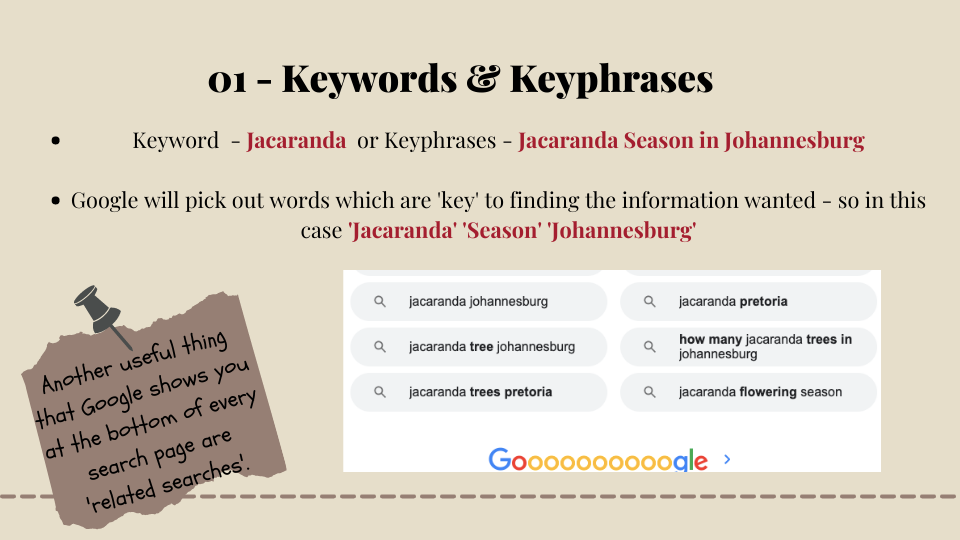
Keywords and Key Phrases
2. PAGE CONTENT
-
Your content is the single most important factor for SEO.
-
The better your ‘content’ the more Google wants to recommend you
-
SEO is writing content for the ‘user’, not the search engine
-
Using your researched Keywords/Key Phrases within your content helps Google to ‘recommend it’
-
Keeping content fresh, interesting and varied provides value to your visitors
Key elements of a page content are


3.IMAGES
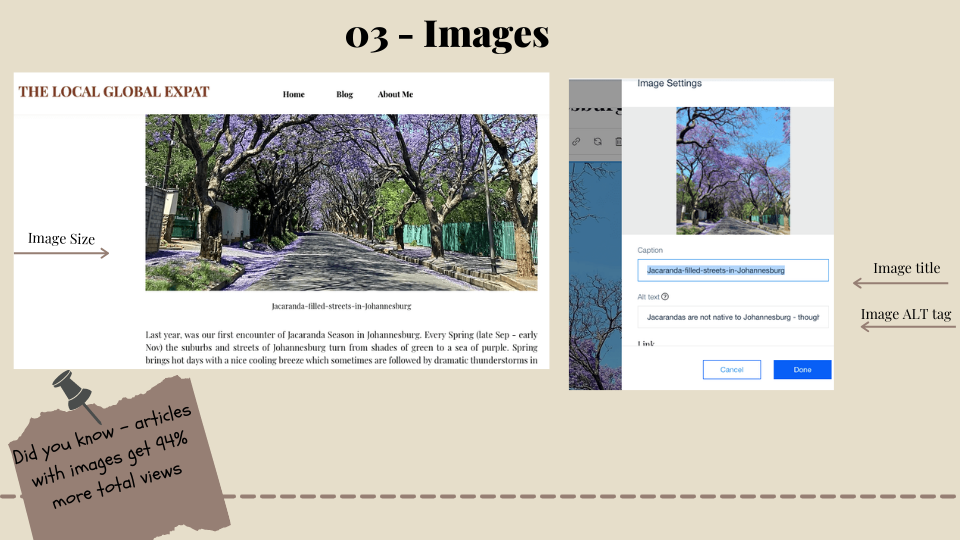
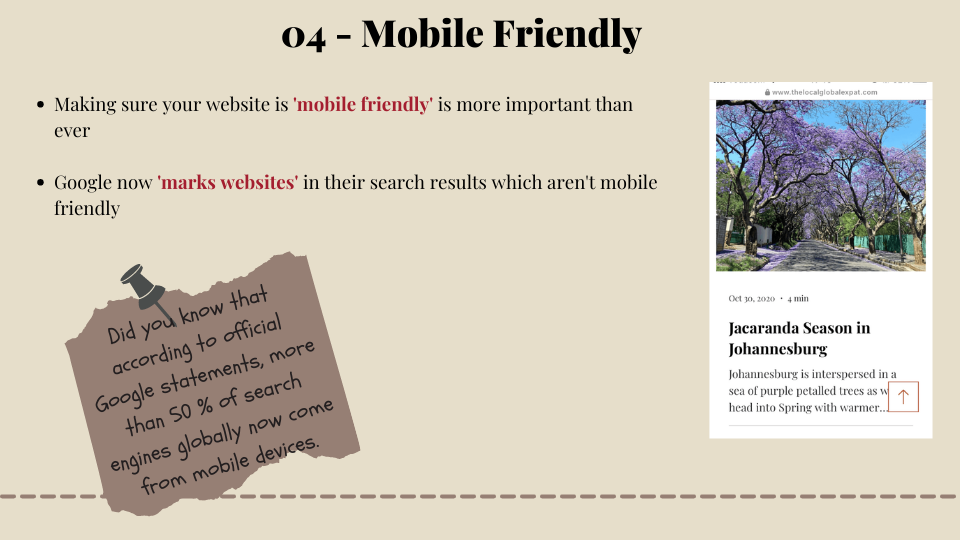
5. OFF PAGE SEO

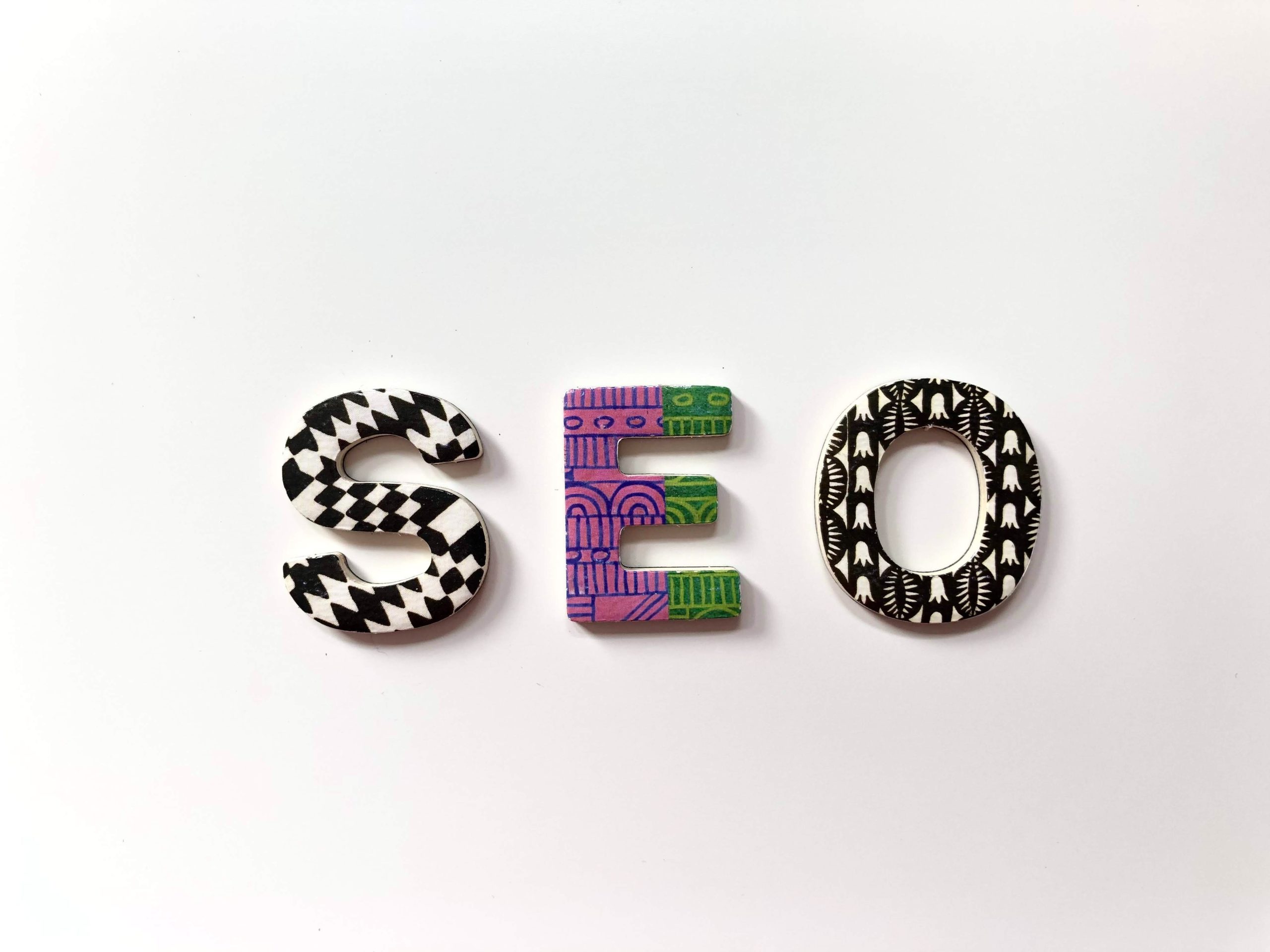
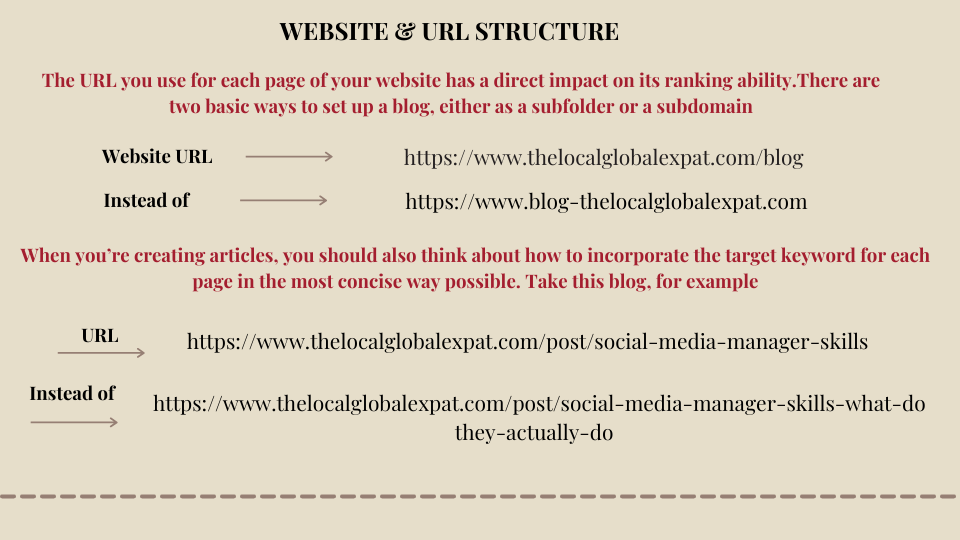
[…] 5 STEPS TO BOOST YOUR WEBSITE SEO […]